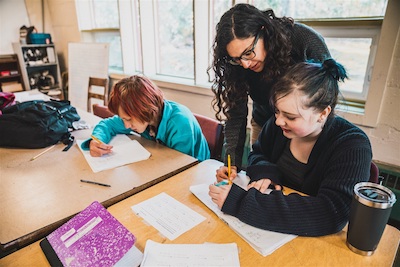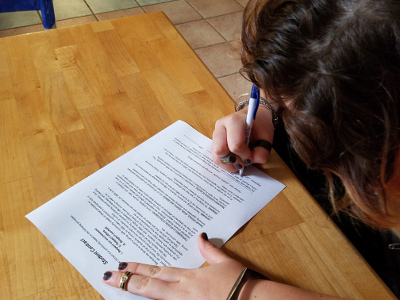Managing Student Behavior with a Student Contract

Managing student behavior can be a challenging task, especially with middle schoolers. They like to argue and talk back. They like to disrupt class and draw attention to themselves. Some of them recently discovered the power of sarcasm and enjoy using it, a lot.
As young adolescents discover their autonomy and figure out who they are going to be as adults, it’s normal for them to test rules and push authoritative boundaries. It is a natural process in discovering their own morality and understanding of society. That doesn’t mean middle school should be chaos though.
What is the Student’s Role?
A lot of information exists about how to manage discipline in the classroom. Many articles and blogs focus on making sure parents are brought in when there is a problem or creating systems in which student behavior can be monitored and evaluated regularly. Some education experts focus on the need for clear boundaries while others talk about observing students’ moods for potential problem spots that might erupt later. A teacher is supposed to be firm, but flexible; hold their students accountable while still being understanding to their changing needs.
But what about the students? How do we teach them to manage their own behavior? Talking to a student after they have done something wrong can be very effective, but that conversation still carries the weight of an authoritative judgment on their actions. How can teachers create a learning environment in which students feel responsible for their own behavior?

Being Proactive with Managing Behavior
One effective method is through a student contract–not a behavior contract used in response to already occurred problem, but a contract for students’ future behavior. A contract that promotes positive values and goals for how to treat one another.
At Arthur Morgan School, students sign a contract every year. The contract focuses on the concept of respect:
- Respect yourself
- Respect others
- Respect the environment
The contract goes on to include examples of what respect may or may not look like. It includes hard don’ts like drugs, alcohol, and stealing. However it also offers guidelines for how to relate to one another and resolve conflicts. Language including “refraining from body talk” and “nonviolent resolution of conflict” are all included. At the bottom is a place for their signature–not their parents’ or their teachers’ signatures, just theirs.
They don’t see the contract as a punishment, but instead as an ideal for which to strive. Later in the school year when people are stressed and their behavior begins to slide, the contract is something they can refer back to for help.
Signing the Contract

AMS students sign the contract every year. Even returning students who signed it before, reaffirm their commitment to the contract by signing it again. Of course being middle schoolers, they don’t just want to simply sign a piece of paper. Instead they create a special ceremony involving costumes, skits and baked treats.
A whole evening is dedicated to the event. Students first attend an All School Meeting where older students can pass down stories and knowledge about why the contract is important. Then all the students break into groups and talk about each line of the contract so they have a real understanding of what they are agreeing to and why it’s important. The students have lots of time to ask questions.
Then they dress up in costumes (usually set to a predetermined theme) and go to a special spot on campus where they witness each other signing the contract one by one. They end the evening around a bonfire in which students are encouraged to speak to what their hopes and fears are for the upcoming school year. The ceremony is a great way to introduce new students to the school and impart on them the level of trust and responsibility the school community is placing in them. As a result, teachers can spend more time teaching students than managing their behavior.
-By Nicholas Maldonado
